The
Phonograph and Its Future
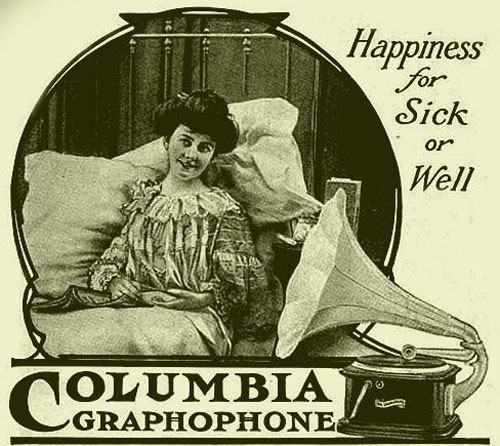
Probability:
Books
.
Books. -- --
Books may be read by the charitably-inclined
professional reader, or by such readers especially employed for that
purpose, and the record of such book used in the asylums of the blind,
hospitals, the sick-chamber, or even with great profit and amusement
by the lady or gentleman whose eyes and hands may be otherwise employed;
or, again, because of the greater enjoyment to be had from a book
when read by an elocutionist than when read by the average reader.
The ordinary record-sheet, repeating this book from fifty to a hundred
times as it will, would command a price that would pay the original
reader well for the slightly-increased difficulty in reading it aloud
in the phonograph.
For the sick or well
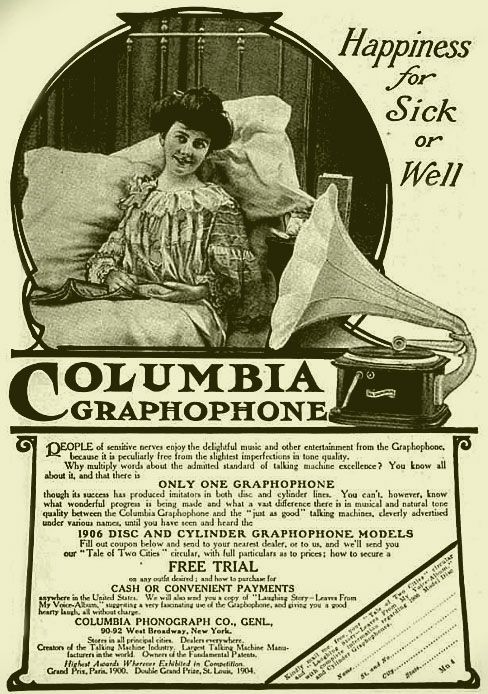
1905 - Entertainment in
bed - Sick or Well
Doctor's prescription for
a severe case of grouchitis: a Victor Talking Machine
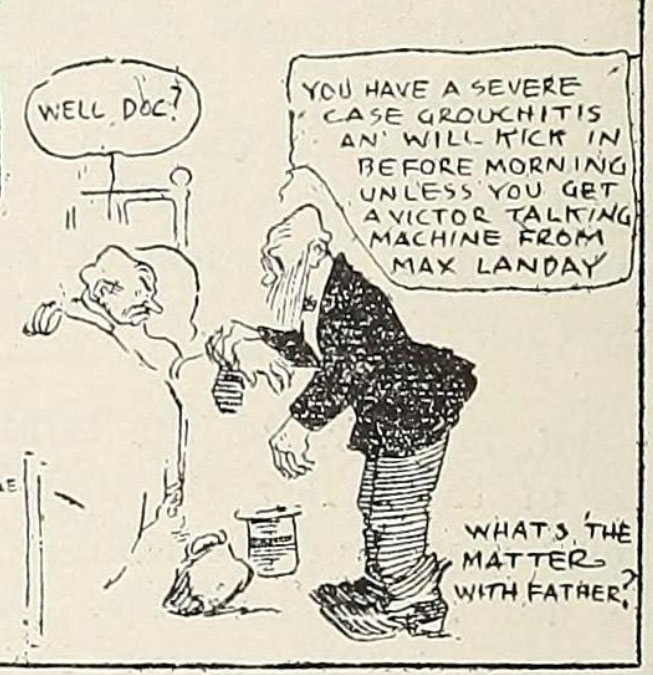
Panel from New York Review cartoon
promoting the Landay Bros. as the leading distributors of the Victor
Talking Machines and Records in Greater New York. (The
Talking Machine World,
July 1910).
Julian Hawthorne, the son of Nathaniel
Hawthorne wrote in 1888 with enthusiasm about the phonograph's future
stating that its possible effects upon literature are where "imagination
finds its broadest opportunity. A spoken literature instead of a written
one, a library full of human voices...Let us invest in our Phonograph-Graphophones
with as little delay as may be."

"The Human Voice in
Literature" by Julian Hawthorne
Description of the
Phonograph and Phonograph-Graphophone by their Respective
Inventors-
Testimonials as to their
practical use, 1888, New York
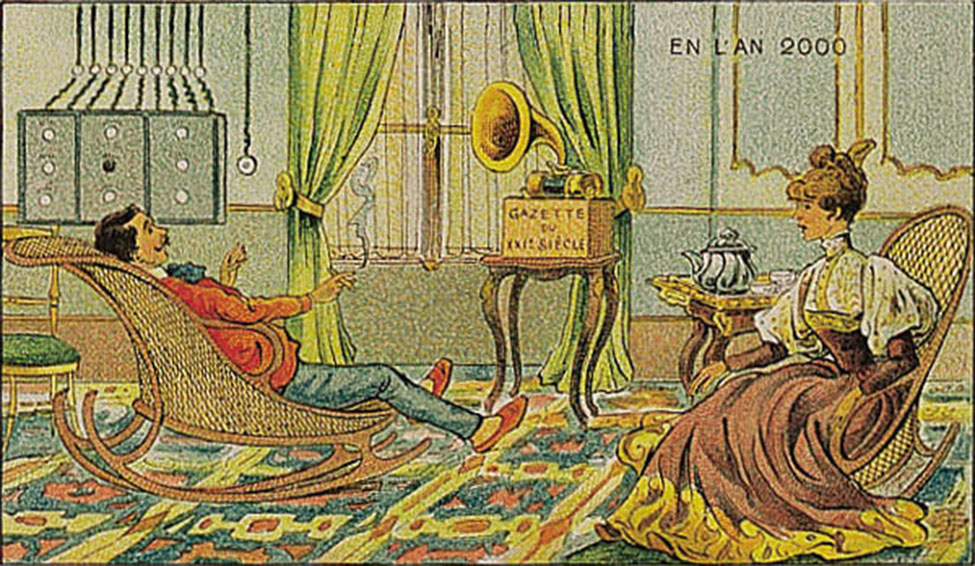
1910 postcard by Villemard
predicting how the newspaper will be heard on a phonograph record in
the year 2000.
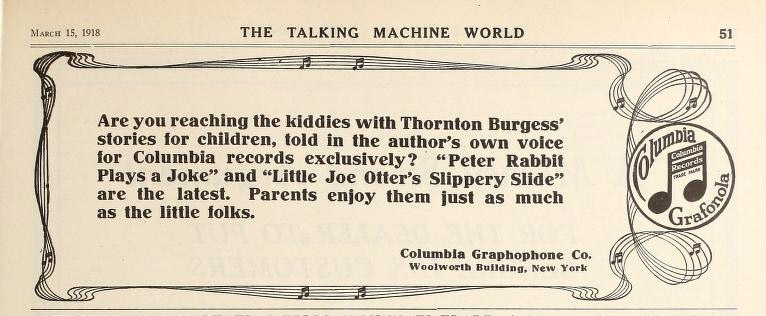
Kiddie stories "told
in the author's own voice." Columbia records, The Talking
Machine World, March 15, 1918
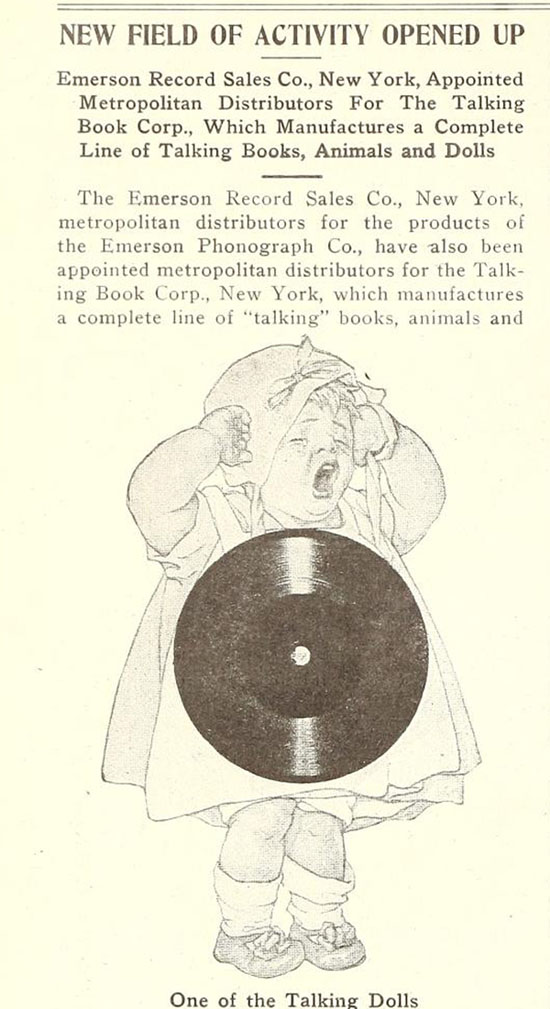
The
Talking Machine World, May 15, 1919
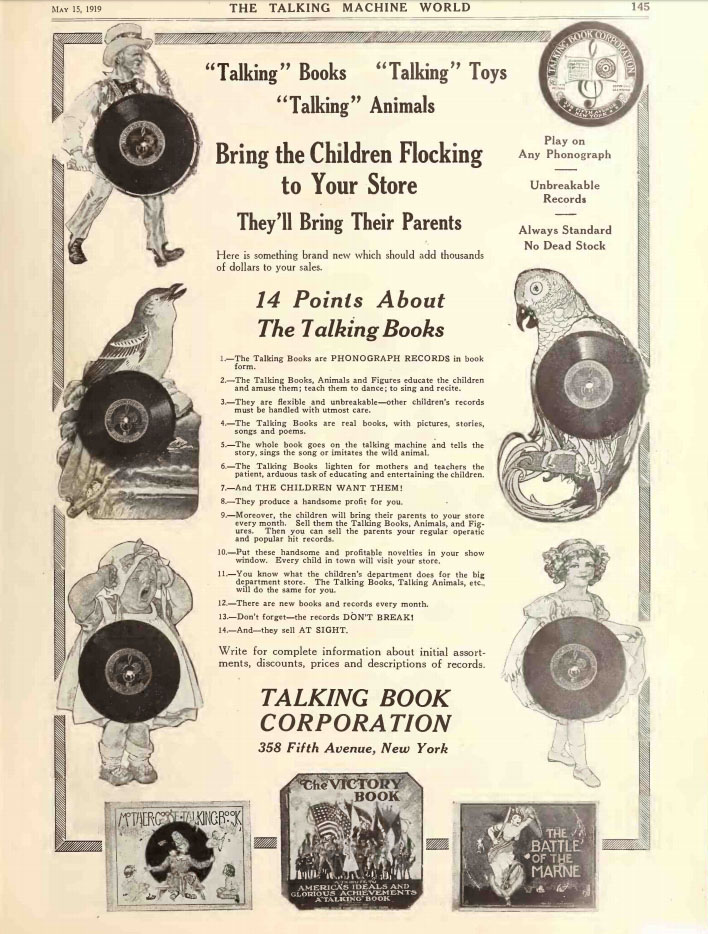
The Talking Machine
World, May 15, 1919
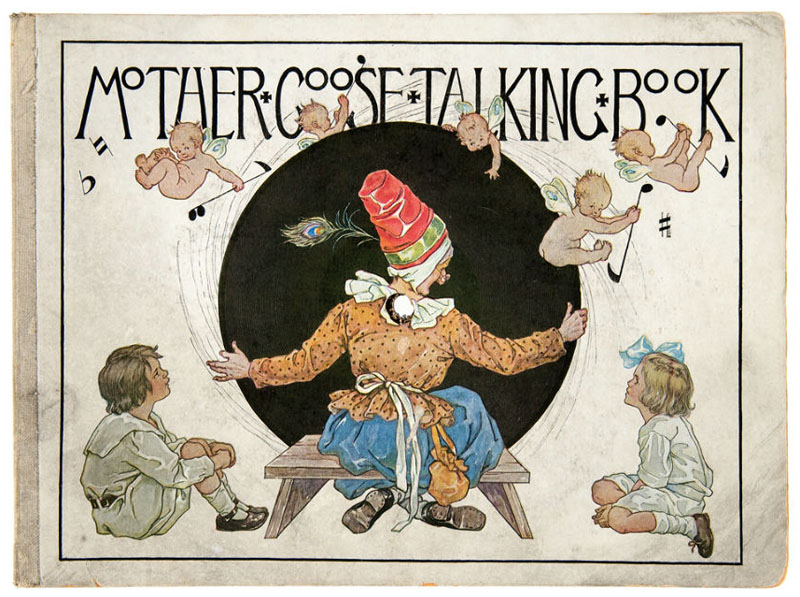
Published by Talking Book
Corporation, Illustrated by C.M. Burd
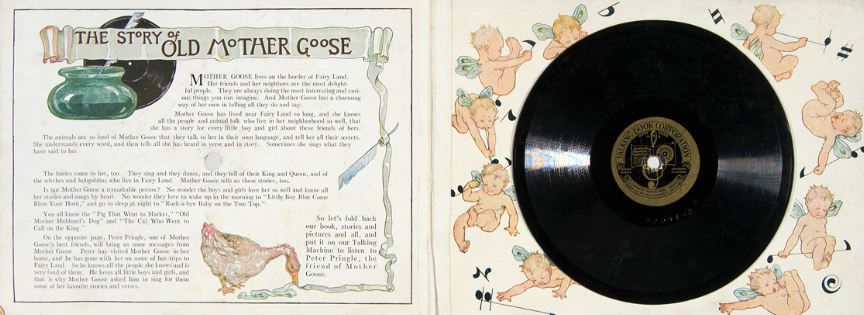
Inside cover of Mother
Goose Talking Book.
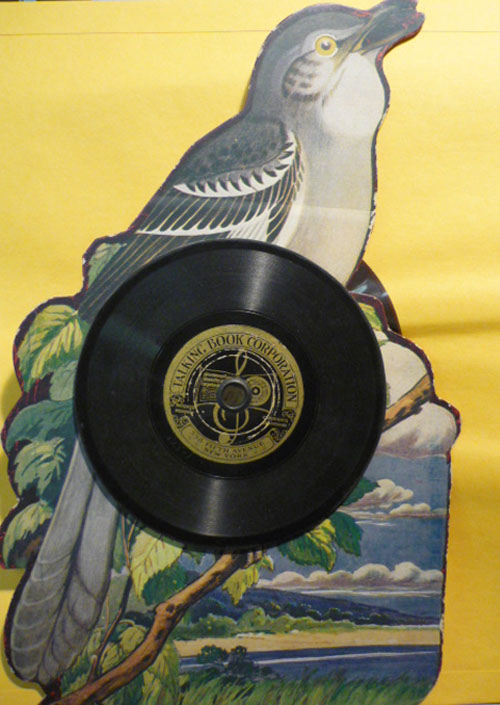
The Mocking Bird -
Talking Book Corporation 1918
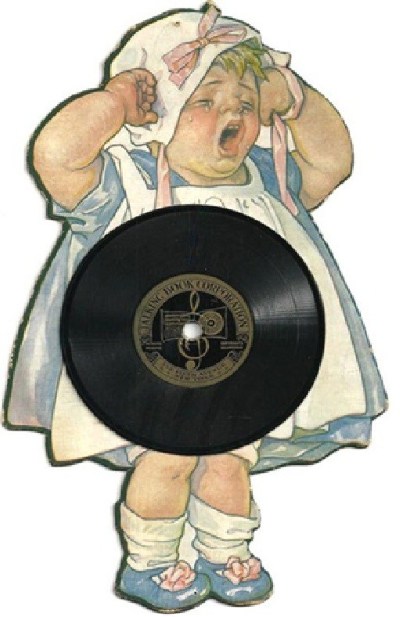
The Tired Baby -
Talking Book Corporation 1919. Played "Sleep, Baby, Sleep" 78 rpm.
For more examples of Talking Book Corp. records from this series, see Discogs.
"Relief from the Tedium of the Sick
Room" with music from the Talking Machine.
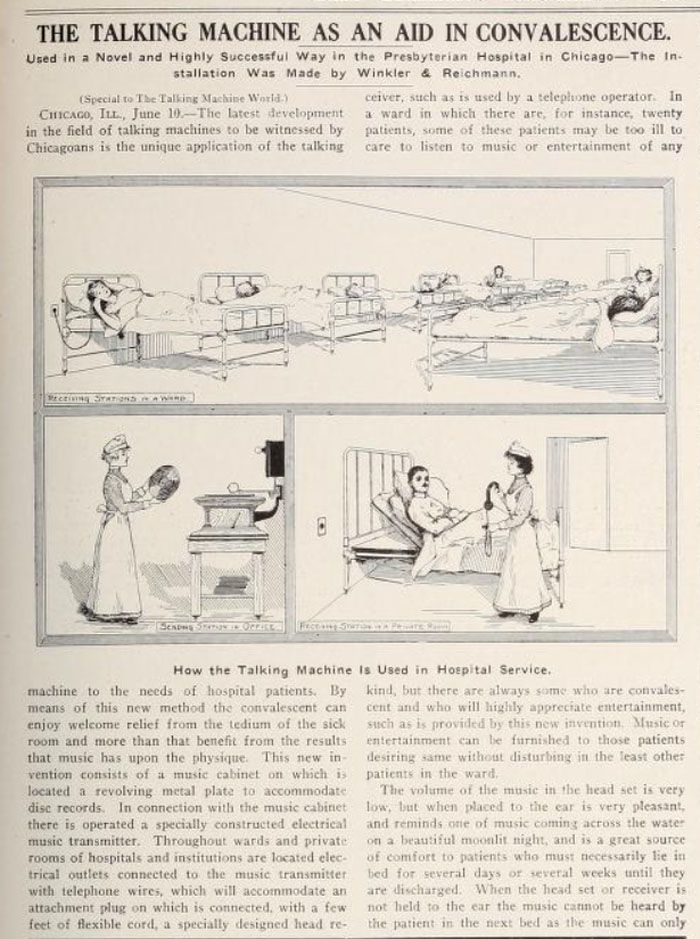
The Talking Machine
World, June 1915
Library of Congress
authorized in 1931 to administer books for those with vision loss
"The Pratt-Smoot Act of March 1931
authorized the Library of Congress to administer a project in which
selected libraries would "serve as local or regional centers for the
circulation of books" to adults with vision loss. Eighteen libraries
were chosen to distribute the books, and the Library of Congress selected
fifteen titles to be brailled. This was the beginning of the National
Library Service for the Blind and Physically Handicapped." See
the American Foundation for the Blind AFB
for details of confidential letter suggesting the use of phonograph
records and the authorization of funds in 1933 for talking books.
"We will not only have to
build up a library of phonograph records, but we will have to provide
thousands of blind people with inexpensive talking machines."
The legal question that also must be answered "is whether
a book is still a book when it is printed on phonograph records."
Here is some history of the "Talking
Books" project as described on the National
Library Services webpage (1):
"Finally, in 1933, AFB produced
two types of machines – one spring driven and the other a combination
electric radio and phonograph. A durable record was perfected, recorded
at 150 grooves to an inch, so that a book of 60,000 words could
be contained on eight or nine double-faced, twelve-inch records.
The turntable ran at 33-1/3 revolutions per minute, which permitted
thirty minutes of reading time on each record. By 1934, the talking
book was developed and the number of reproducers in the hands of
blind readers was sufficient to justify using part of the congressional
appropriation for purchasing records." (1)
"The 1934 annual report of
the Librarian of Congress, the Library's first order was for the
following titles:
The Four Gospels
The Psalms
Selected Patriotic Documents:
Declaration of Independence and Constitution
of the United States Washington's Farewell Address and Washington's
Valley Forge Letter to the Continental Congress. Lincoln's Gettysburg
Address, Lincoln's First and Second Inaugural Addresses.
Collection of Poems
Shakespeare:
As You Like It, Merchant of Venice,
Hamlet, Sonnets.
Fiction: Carroll: As the Earth
Turns Delafield: The Diary of a Provincial Lady Jarrett:
Night Over Fitch's Pond Kipling: The Brushwood Boy Masefield:
The Bird of Dawning Wodehouse: Very Good, Jeeves."
(list from Chapter 10, The
Talking Book, AFB)
"The Library’s appropriation
did not at first include funds for machines; they had to be purchased
at a cost between thirty-five and sixty dollars, either by the blind
person who desired to borrow the recorded books or on his behalf
(as was frequently the case) by philanthropic organizations."
(1)
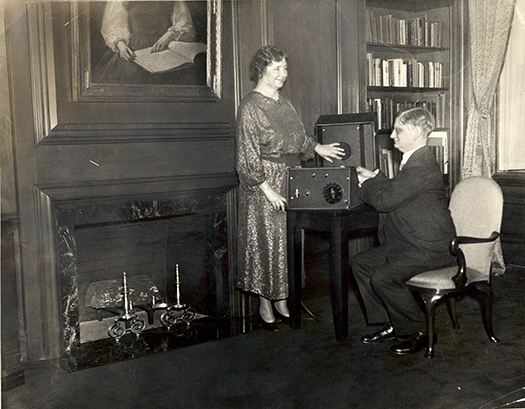
Robert B. Irwin, AFB Executive
Director, demonstrates the Talking Book machine to Helen Keller
in the Helen Keller Room at AFB (photograph courtesy of Talking
Book Archives, American Foundation for the Blind. Circa December
1935)
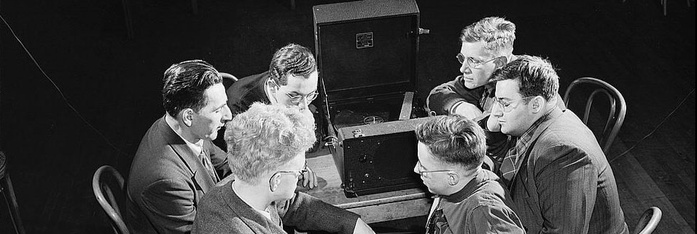
Photo courtesy of The National Library
Service for the Blind and Print Disabled
"In spring 1962 the Library
of Congress began ordering talking books for juveniles recorded
on ten-inch records at 16-2/3 rpm, and all talking-books ordered
after January 1963 were recorded on 16-2/3 rpm records. This smaller,
slower-speed disc provided forty-five minutes of recorded time on
each side of the record, thus reducing the number of records required
for each book. The savings effected by the change of speed were
used to increase the number of copies of each talking book that
could be produced and to add five popular magazines to the talking-book
program.
In 1969, magazines began to be
recorded at 8-1/3 rpm, and the recording of all disc talking books
at 8-1/3 rpm began in January 1973. Use of these slow recording
speeds made it possible to include almost twice as much material
as on a disc of corresponding size recorded at 16-2/3 rpm. Savings
thus effected allowed for an increase in the number of copies issued
for each title selected. Since fewer records were required for each
book, readers and librarians could handle, store, and ship the ten-inch,
8-1/3 rpm records much more easily and economically than the larger,
bulkier records." (1)
An excellent timeline and Chronology
of Developments in the National Program is also on the NLS
webpage.
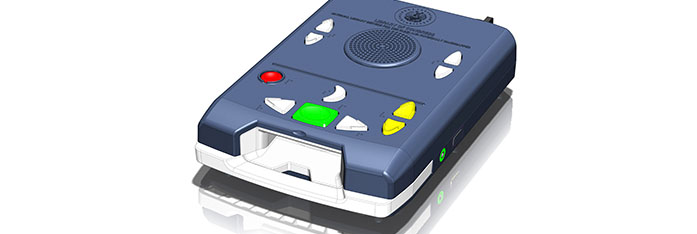
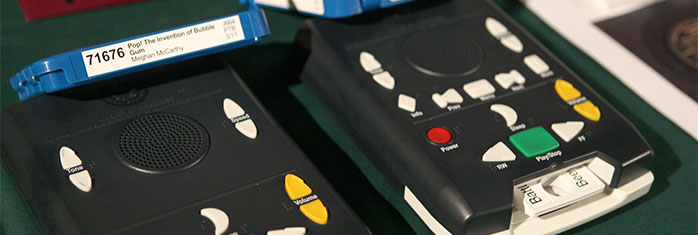
Examples of Digital Audio
Books available in 2020 for free from National Library Service
"Enchanting excursions into storyland..." read by "familiar
voices of beloved personalities..."
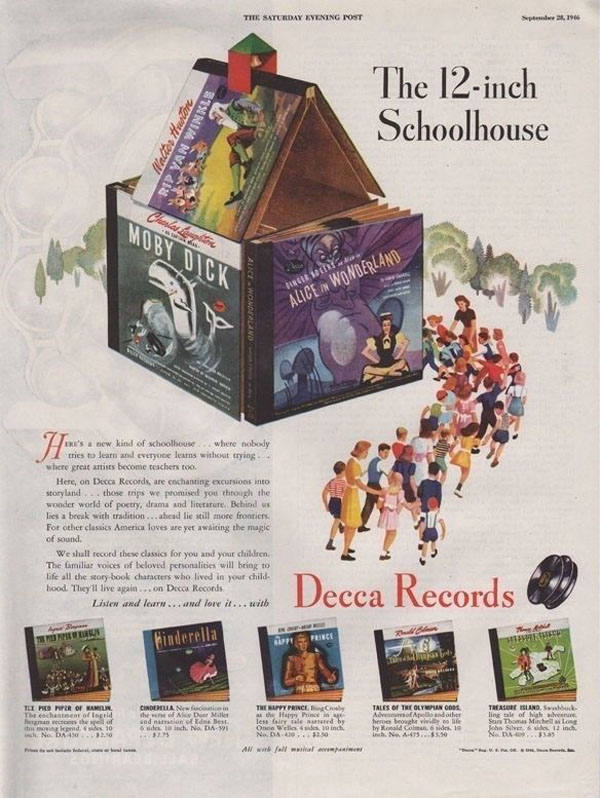
The Saturday Evening
Post, 1946

Phonographia
|

















